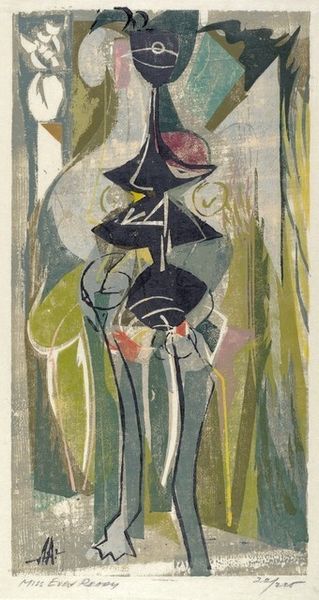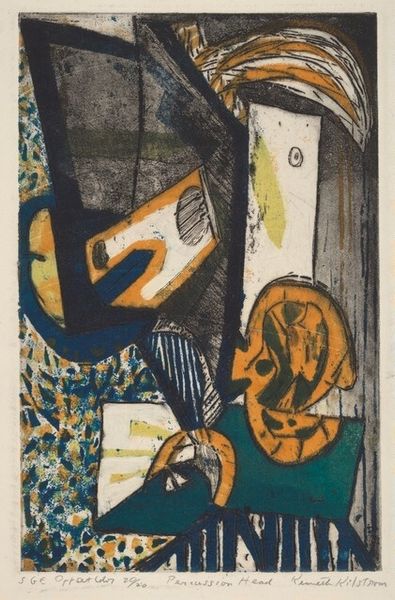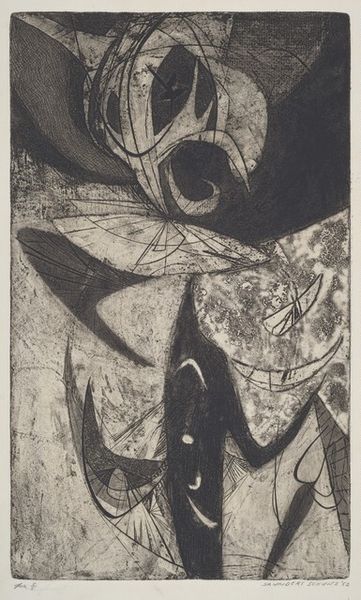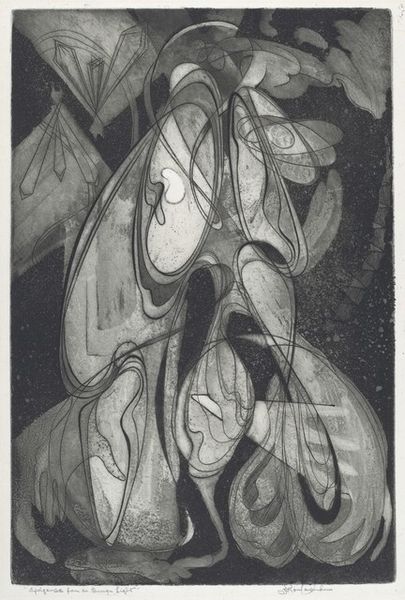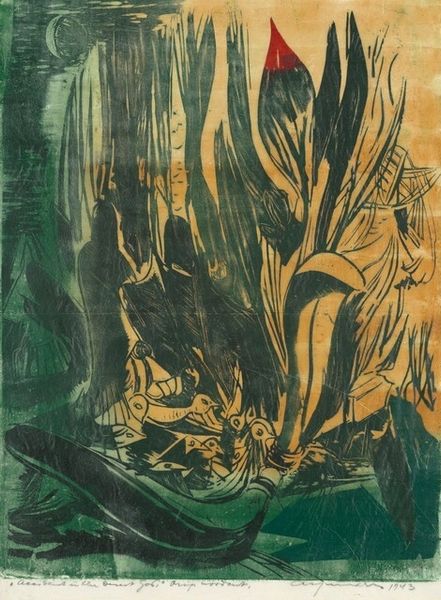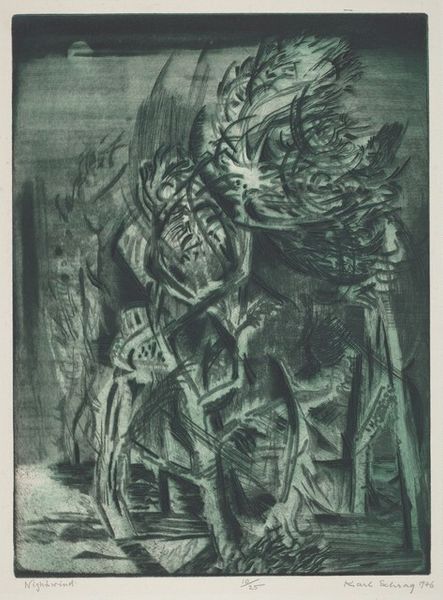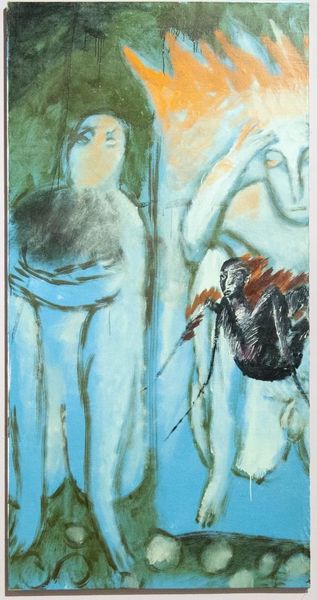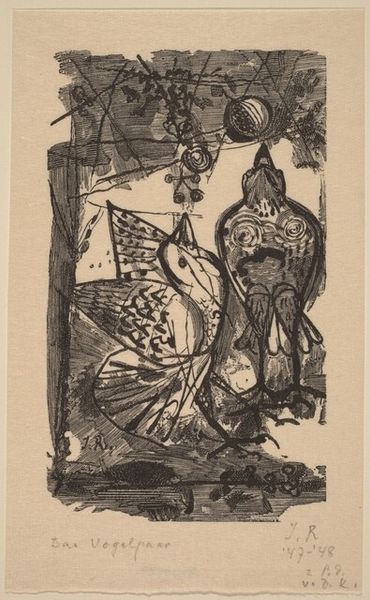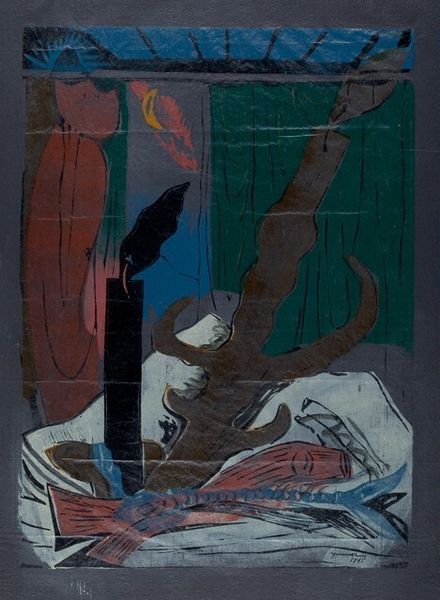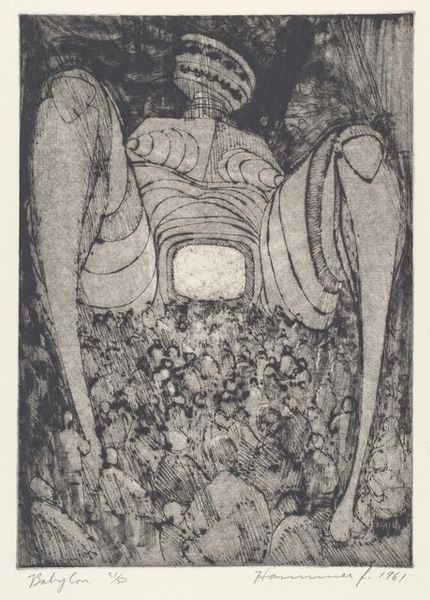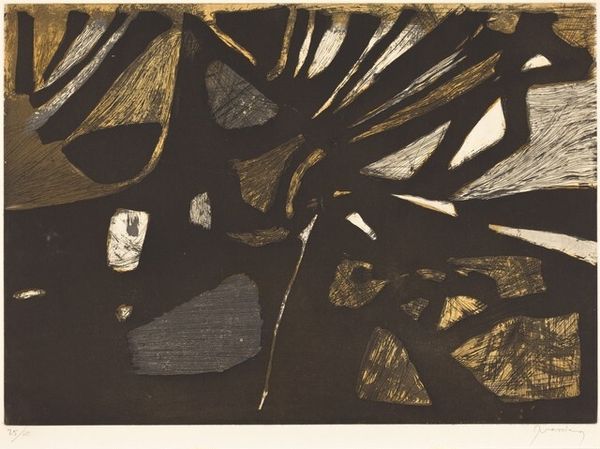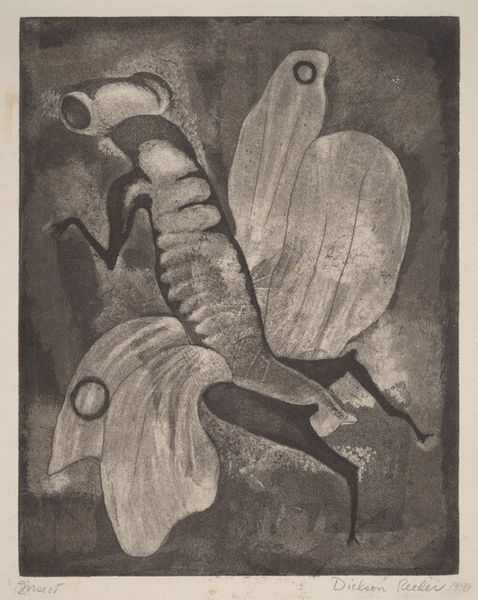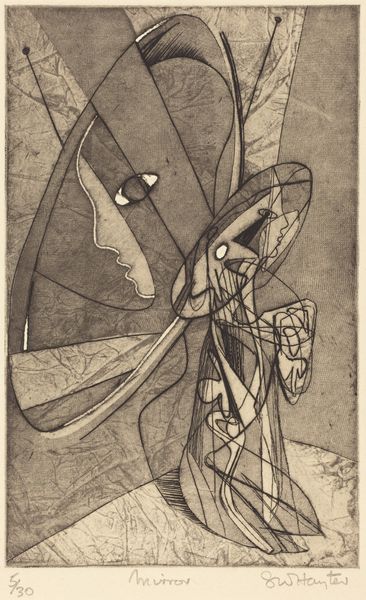
print, etching
# print
#
etching
#
abstraction
#
modernism
Copyright: National Gallery of Art: CC0 1.0
Benton Spruance made this print, ‘Fire’s Out’, using lithography, a process that depends on the antipathy between grease and water. The artist likely drew his composition on a prepared stone or metal plate with a greasy crayon, then treated the surface so that ink would adhere only to the drawn areas. But what makes this image resonate is not only the technique, but how the lithographic marks evoke a social reality. Spruance captured scenes of working-class life in mid-20th-century America, marked by hardship but also resilience. Notice the worn textures, muted tones, and ambiguous spaces in the image. There is a melancholy, a sense of being-left-behind hanging in the air. These are the byproducts of a specific mode of production: the print shop, with its skilled labor and mechanical reproduction. It’s important to look closely at this work, not just as a beautiful image, but as a record of a particular time and place. By paying attention to the materials, processes, and social context, we can challenge the traditional distinctions between fine art and craft, and appreciate the full meaning of a work like "Fire's Out."
Comments
No comments
Be the first to comment and join the conversation on the ultimate creative platform.
